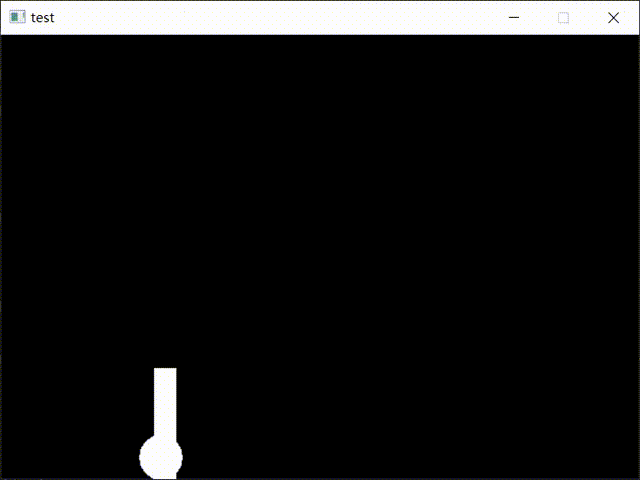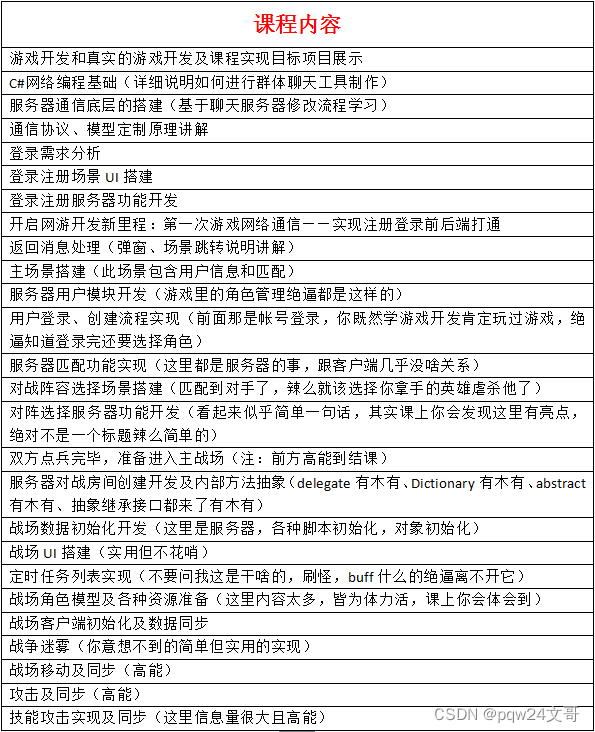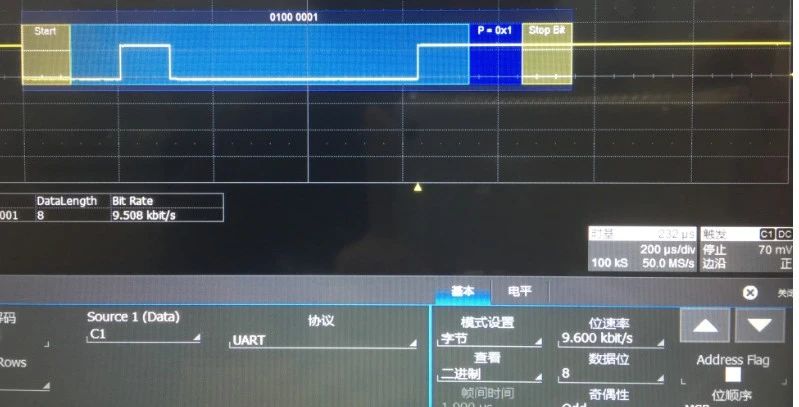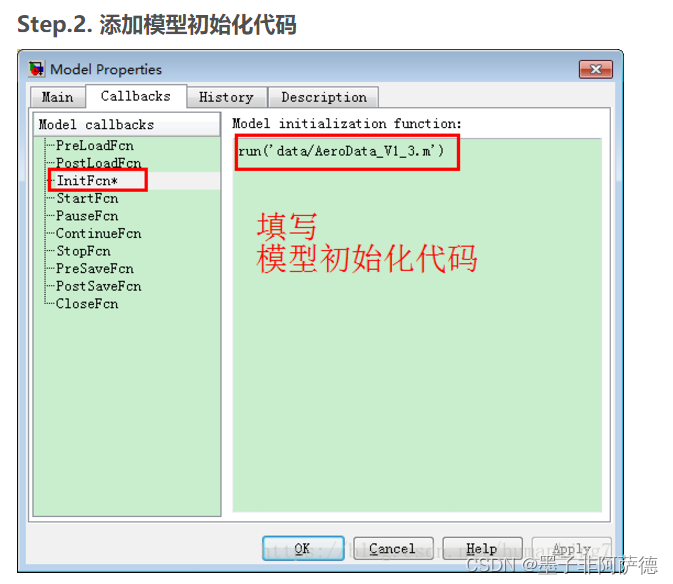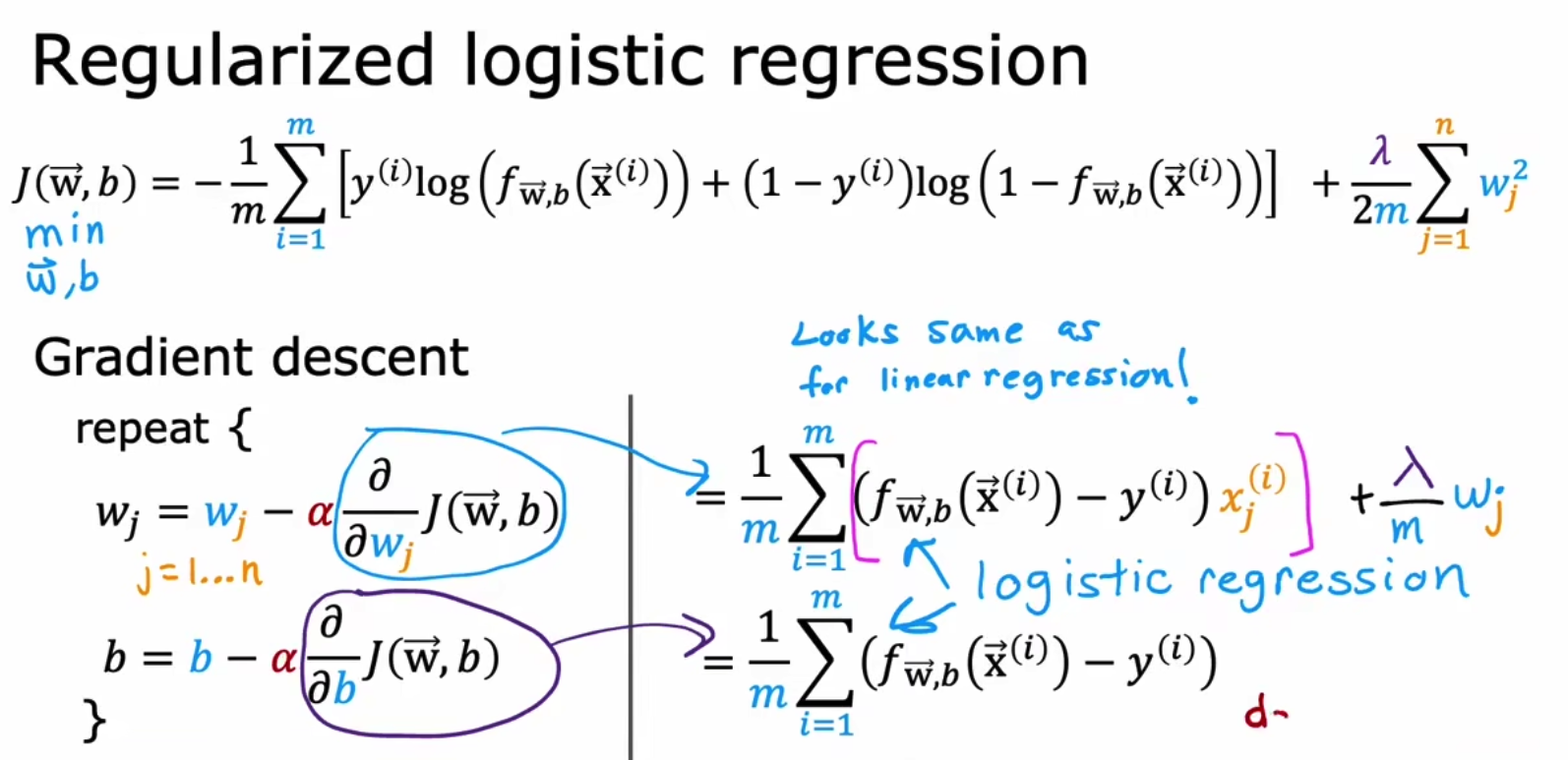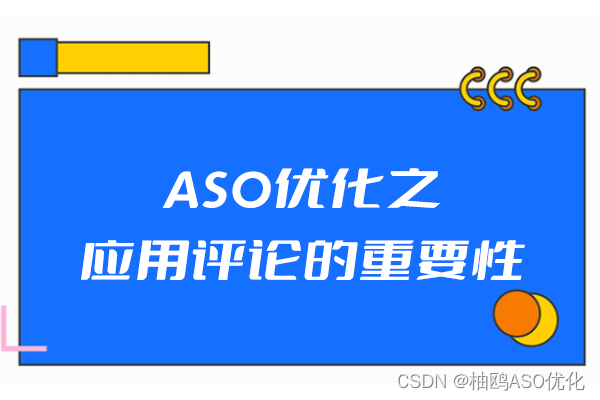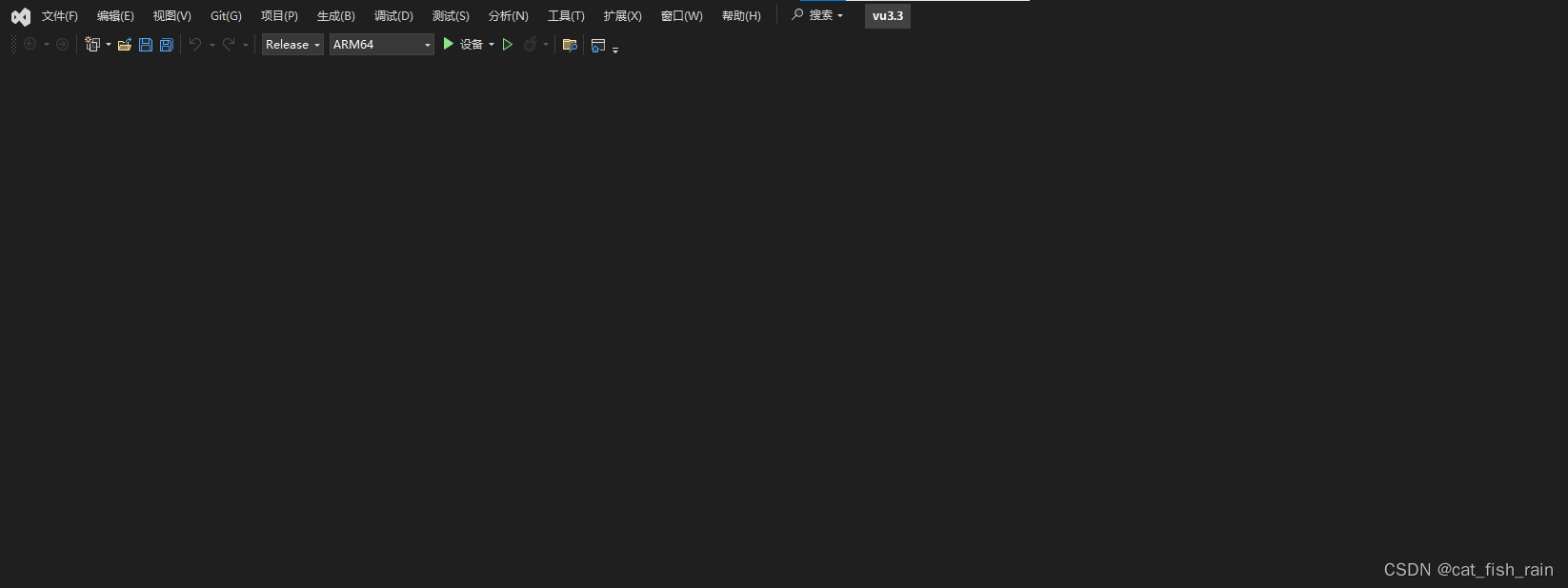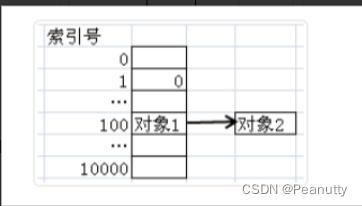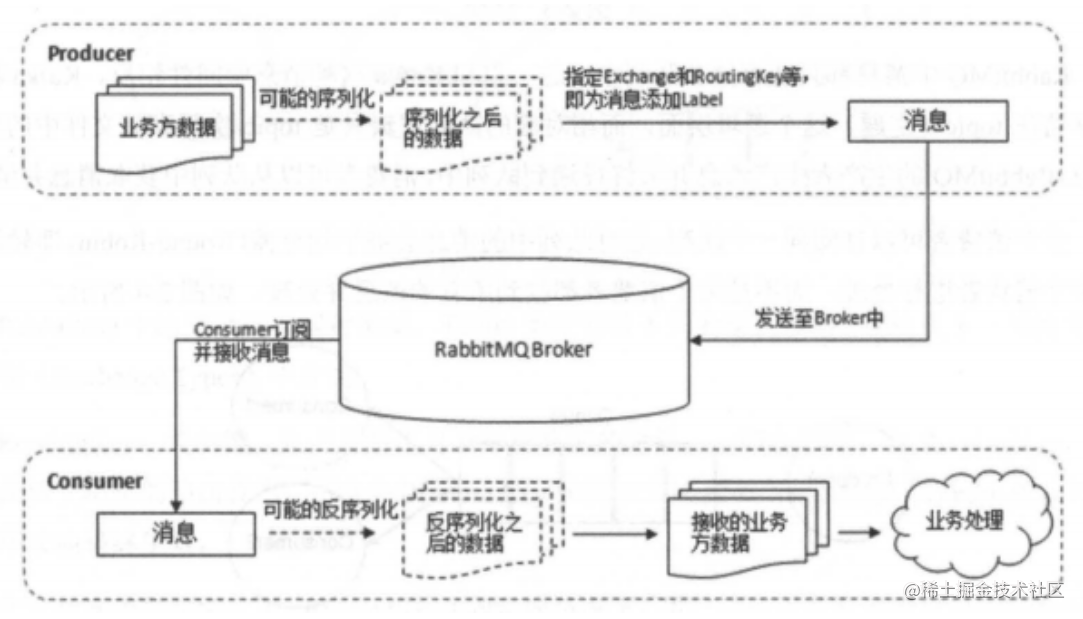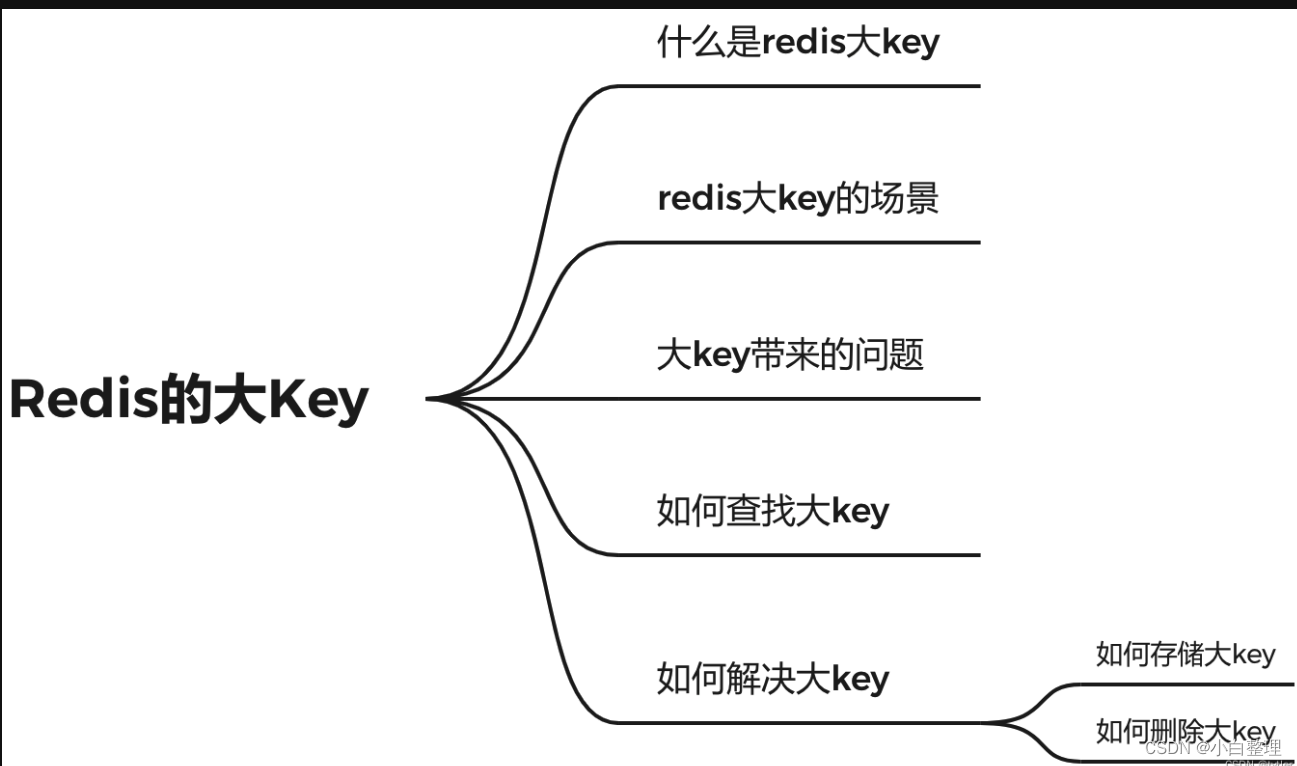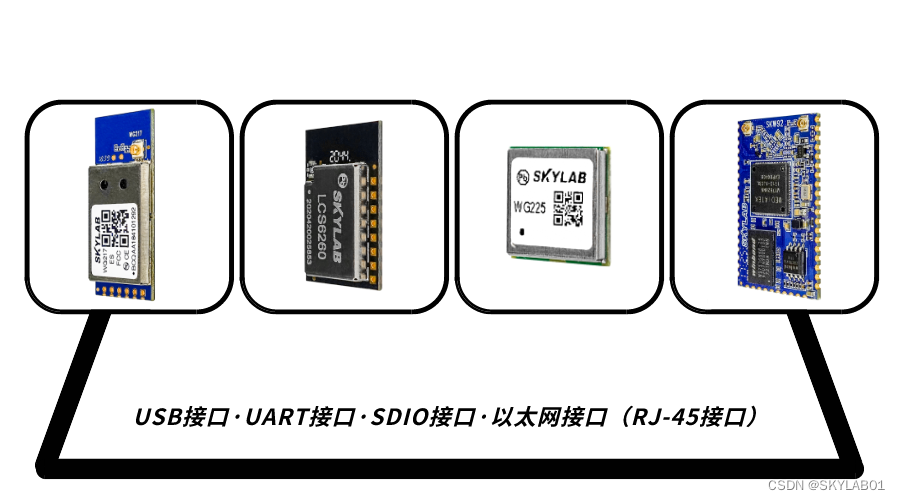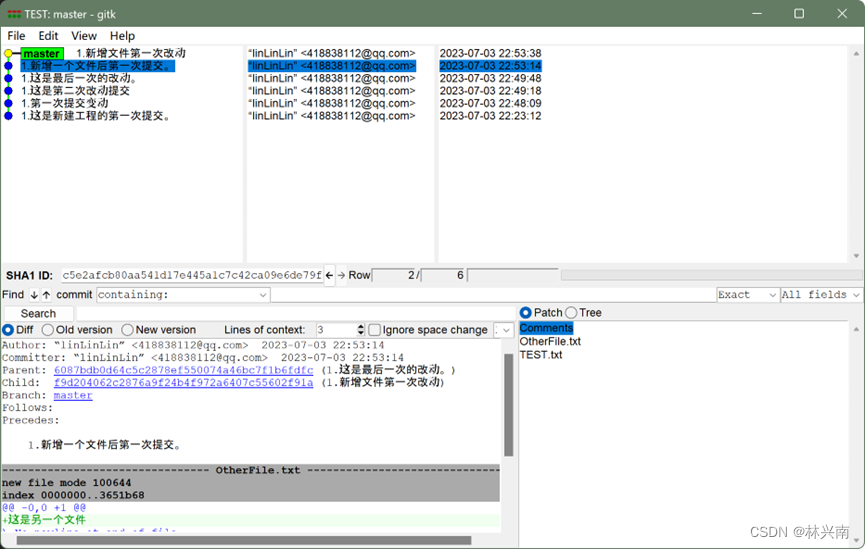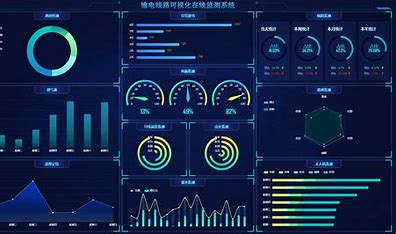文章目录
- 1.有哪些情况?
- 1.1 小球在方块左侧
- 1.2 小球在方块上面
- 1.3 小球在方块右侧
- 2.解决
1.有哪些情况?
今天来实现下小球碰到方块的判定
那么我们首先要明确的就是在什么时候,小球会碰到方块?
1.1 小球在方块左侧
第一个就是小球在方块的左侧的情况:
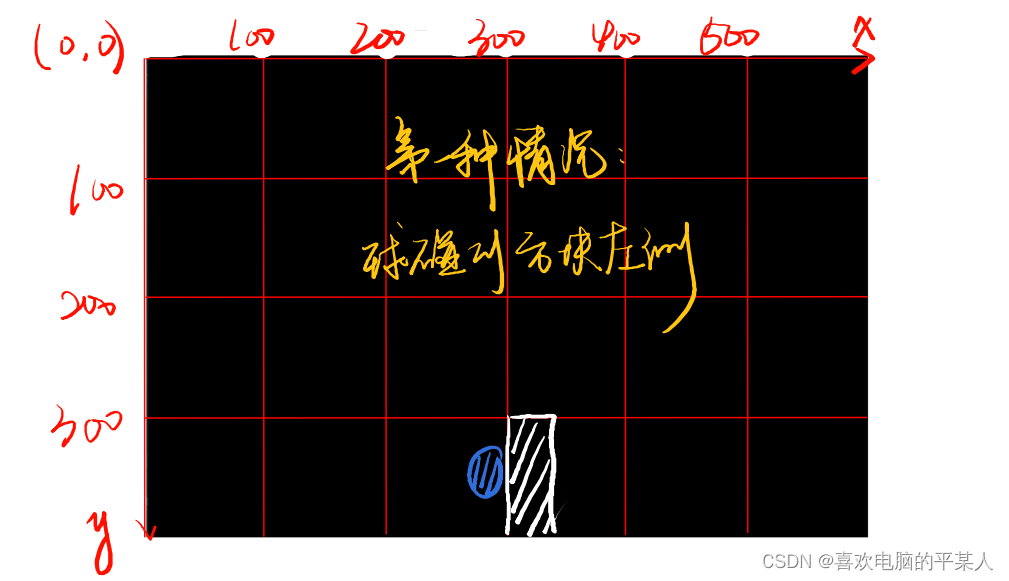
此时小球圆心的x轴为320,y轴的范围是380~280
1.2 小球在方块上面
第二个是小球在方块上面的情况:
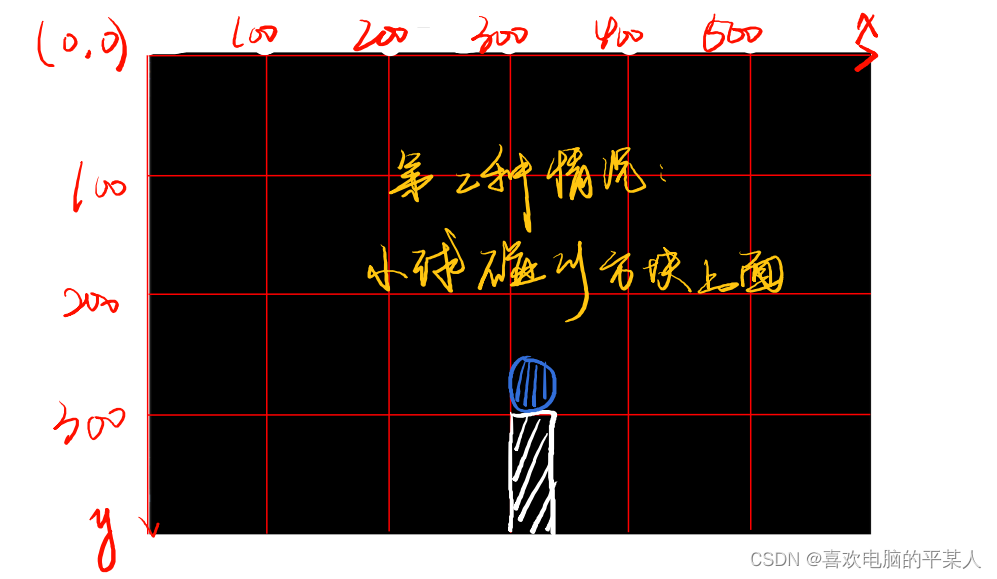
此时小球x轴的变化范围为280~340,y轴为320
1.3 小球在方块右侧
第三个也是最后一个是小球在方块右侧的情况:
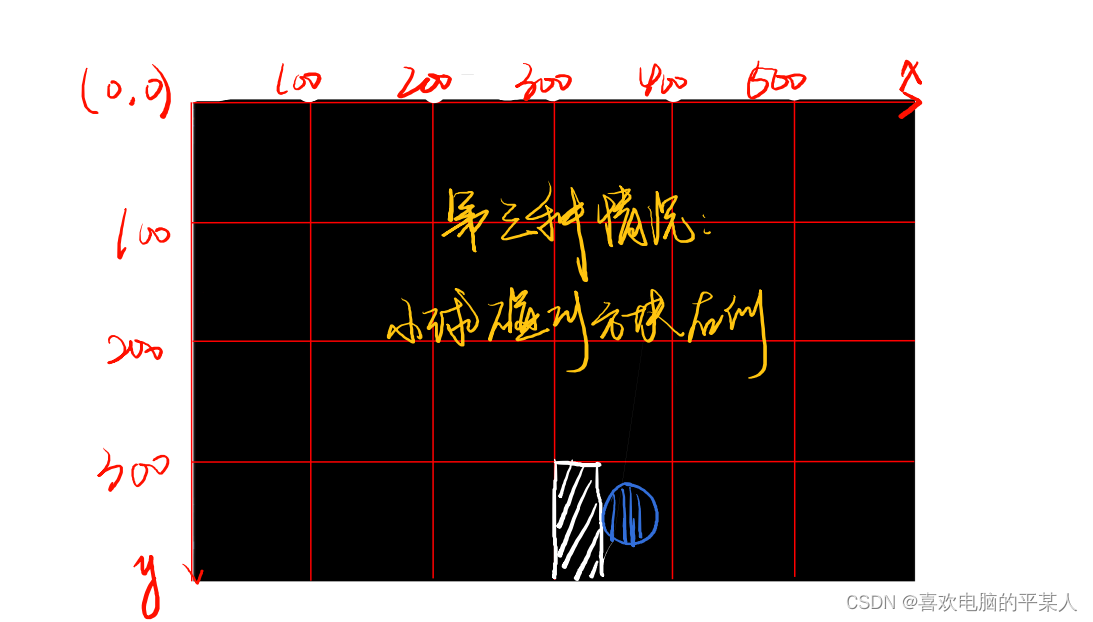
此时小球x轴为340,y轴的变化范围为280~380
2.解决
我们只需写一个if-else语句即可:
if ((rect_left_x <= ball_x + r) && (rect_left_x + rect_width >= ball_x - r)&&(height-rect_height<=ball_y+r)) {
Sleep(100);
}
也就是碰到方块做一个慢动作的效果
整段代码就是:
#include<graphics.h>
#include<conio.h>
#include<stdio.h>
int main() {
double width, height;//定义画面长度、宽度
width = 600;
height = 400;
initgraph(width, height);
double ball_x, ball_y,ball_vy, r,g;//定义小球x轴、y轴、y轴方向的速度、半径、重力加速度
g = 0.6;
r = 20;
ball_x = width / 4;//x坐标等于整个画面x轴长度的四分之一
ball_y = height - r;//y坐标等于画面的y轴长度减去圆的半径(保证圆在画面的最底端)
ball_vy = 0; //最初小球落在地面上时y轴方向的速度为0
double rect_left_x, rect_top_y, rect_width, rect_height;//定义方块的各个位置变量
rect_width = 20;
rect_height = 100;
rect_left_x = width * 3 / 4;
rect_top_y = height - rect_height;
double rect_vx = -3;//定义方块的移动速度
while (1){
if (_kbhit()) {
char input = _getch();
if (input == ' ') {
ball_vy = -16;
}
}
ball_vy = ball_vy + g;//根据牛顿力学定律得
ball_y = ball_y + ball_vy;//小球y轴方向的变化
if (ball_y >= height - r) {
ball_vy = 0;//小球落地以后速度清零
ball_y = height - r;
}
rect_left_x = rect_left_x + rect_vx;
if (rect_left_x <= 0) {
rect_left_x = width;//方块消失以后重新出现
}
if ((rect_left_x <= ball_x + r) && (rect_left_x + rect_width >= ball_x - r)&&(height-rect_height<=ball_y+r)) {
Sleep(100);//碰到方块慢动作
}
cleardevice();
fillrectangle(rect_left_x, height - rect_height, rect_left_x + rect_width, height);
fillcircle(ball_x, ball_y, r);
Sleep(10);
}
_getch();
closegraph();
return 0;
}
效果:
